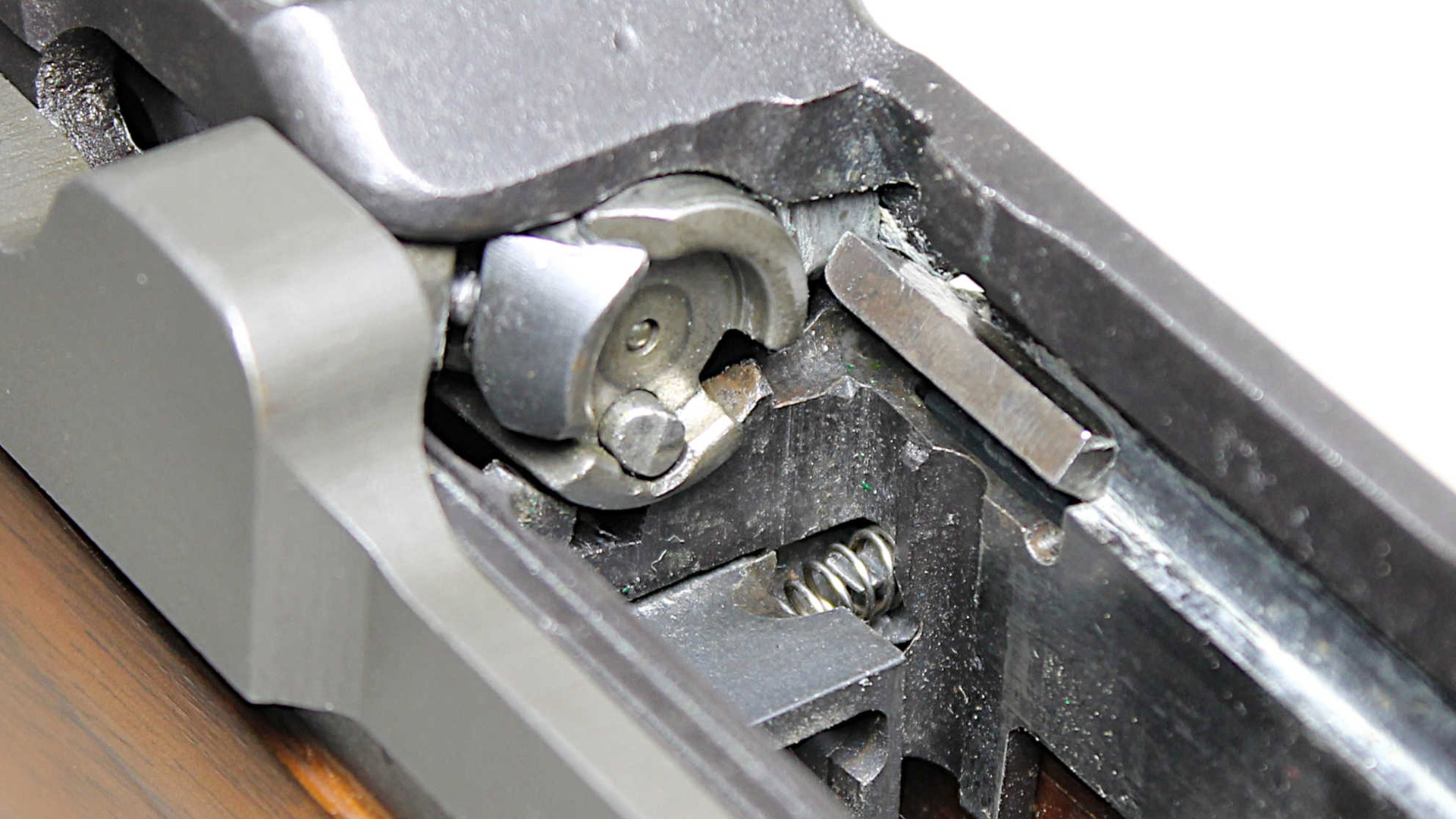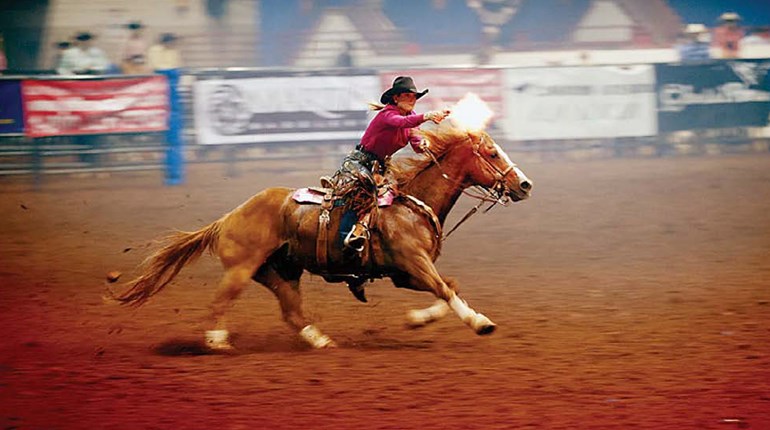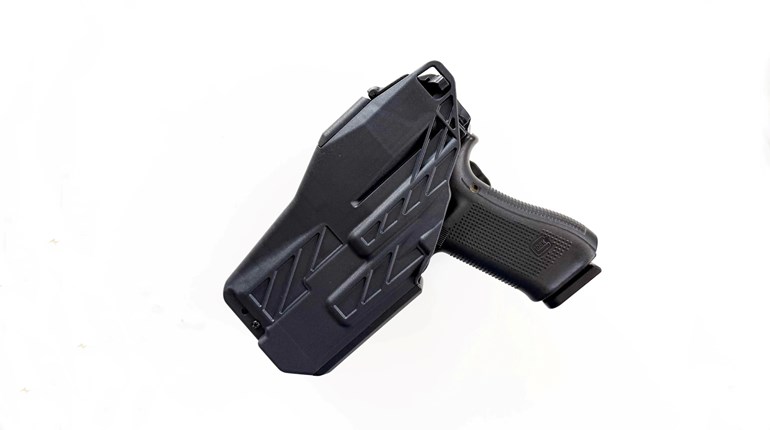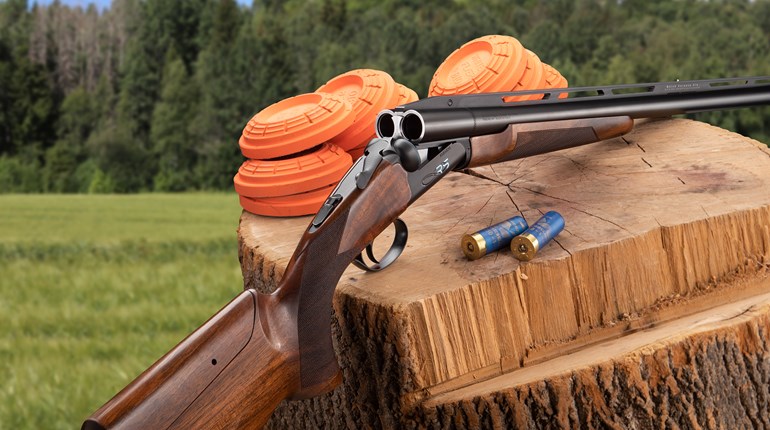
If you’ve ever thought the M1 Garand would have been a better rifle if it had a box magazine, you’re not alone—John C. Garand thought so, too. And when milsurp M1s finally became available in the 1950s, likeminded gunsmiths finally did what the U.S. Army declined to do. (Top photo: Are those M1 Garands? Top yes, and bottom yes.)

Fact is, as far back as 1919 John C. Garand attached a box magazine to his still-in-development semi-automatic rifle for the U.S. Army. He also chambered it for a .276-caliber cartridge and designed the rifle’s semi-automatic function to begin with movement of the fired primer backward to unlock the action, his so-called “primer actuated” system. This Model T1919 (“T” for Test and “1919” for the year) utilized a 20-round box magazine, and Garand’s Model T1920 did 10 better in accepting a 30-round mag. But looming war and the indecisiveness of the Army finally led by 1936 to the “Rifle, Caliber .30, M1” as we know it, charged with an eight-round en bloc clip firing essentially the same ammunition the Army used in World War I, the .30-06 Springfield.

From bloc to box
But Garand didn’t give up on his detachable box magazine. By 1944, he had redesigned the M1 as a select-fire semi-automatic/full-automatic rifle feeding .30-06 Springfield from a 20-round detachable box magazine. And finally, 30 years after he first hung a box mag on the T1919, the U.S. Army adopted his concept as the M14, firing the new and improved 7.62x51 mm NATO cartridge.
With the M14 going on active duty and huge quantities of M1 Garands retiring to storage, the U.S. Army’s Director of Civilian Marksmanship began releasing M1s for sale to NRA members in the 1950s. Enterprising gunsmiths putting two and two together offered to convert customer-provided M1s to feed the new 7.62 NATO/.308 Win. cartridge from the M14’s box magazine. Let’s take a look at one.

Match gun?
No hack job, whatever gunsmith performed the conversion to this rifle was an excellent machinist, and may have been the designer of the conversion innards as well. The 7.62 mm NATO cartridge is one-half inch shorter than the .30-06 Springfield for which the Garand was designed, so besides modifying the trigger group to accept the M14 magazine, it also has to be able to feed the shorter cartridge from the longer action. The gunsmith accomplished it with a steel block at the back of the mag well that doubles as the magazine retainer. In order to lock the action open without an empty magazine in place, he modified the en bloc clip latch to perform as a bolt hold-open catch via an extension on the latch that blocks the left bolt lug.

The replacement 7.62 mm NATO barrel is stainless steel and full-length. The action is drilled and tapped on the left side for a scope mount, and bedded to the stock at the front and rear. The nice figure on the stock suggests it is aftermarket rather than military, and a glossy varnish finish over a honey-walnut stain really helps the grain to pop out. A recoil pad replaces the original steel butt plate, stretching the length of pull from the M1’s original 13 inches to 14 inches.

Sights appear to be a thin-bladed National Match front but a standard combat rear. Shooting M118 Special Ball from prone position with a sling at 100 yards, the modified Garand keeps all shots in the 10-ring of the NRA SR-21 target. Is this intended to be a match gun? The National Match front sight and the bedded receiver say, “Yes,” but that combat rear sight says, “Maybe not.” Still, with a National Match rear sight installed it may warrant shooting with some Lake City Match ammunition to see.

Such intensive modifications to an M1 Garand today would be expensive and wasted effort, given the availability of Springfield Armory M1A rifles that mimic the M14. We must place this Garand within the context of its day in order to understand why anyone would bother modifying it so, then we can fully appreciate the ingenuity and precision work that went into it.
Read more: M1 Carbine Conversions: “Elegant” or “Abomination”


































